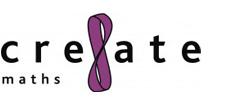Properties of 3D solids
Students are required to know and understand the properties of three dimensional solids such as cubes, cuboids, prisms, cylinders, pyramids, cones and spheres. Students should be familiar with the associated vocabulary and be able to identify a face, an edge and a vertex. Students should be able to find connections between the number of faces, edges and vertices of a three dimensional solid.
Visit the secondary mathematics webpage to access all lists.
- ALL
- Teacher guidance
- Group work
- Activity sheet
Teacher guidance
Platonic Solids
This resource contains a practical activity to introduce students to the classification of 3D shapes. Students are required to use modelling equipment to construct solids and explore the possible shapes that can be formed with only triangular, square or pentagonal faces.
Students are required to know the names of, and use the properties of, platonic solids to solve problems and to explain why some solids can be made and others cannot. The teacher’s notes guide the teacher through the presentation explaining how each of the slides should be used with the class.
Group work
Representing 3D Shapes SS6
This resource is from the DfE Standards Unit, students interpret 2D representations of 3D shapes, analyse 3D shapes using plans, elevations, and isometric drawings and develop their reasoning ability in spatial contexts. Many students may have met these ideas before, but they may still experience difficulties in this area. In this session, students match cards showing 3D drawings of ‘cube houses’ with plans and elevations. They are then provided with an opportunity to create their own cube houses and draw their plans, elevations and isometric representations. This session can be enhanced if accompanied by the following TVT excel program or the software Building houses
Activity sheet
3D Solids and Nets
This resource consists of nineteen instant maths ideas ideal for use as starter activities, extension work or as probing questions to assess understanding. Ideas include making models of solids, playing I-spy, discussing the symmetries of a cube, deciding which nets will and will not fold into a cube and deciding which kind of paper is best for drawing nets of different solids.
3-D
This resource contains three packs, with each pack containing a number of activities that can be used as starters, group work, practical work and investigations. Activities relevant to this topic in pack one include: Solids and Solid shapes in which students find the number of sides, edges and vertices of different solids and Back to back where students describe solids made using multi-link cubes.
Pack two contains a number of puzzles requiring students to match two solids that will fit together to make a cube, make an origami cube, explore tricubes, draw 2D representations of 3D solids and make a tetraflexagon. Pack three includes Cutting the corners in which students explore how the number of faces, edges and vertices is affected when the corners of a solid are cut off and instructions on how to make an origami dodecahedron.
Good Ideas for 3D Shape
This resource contains many ideas designed to provide the opportunity for students to explore the properties of 3D shapes. Many of the tasks require practical equipment hence careful preparation is required when planning the activities. Activities include:
Straw models in which students make cuboids from different lengths of pipe cleaner.
Cube pieces which requires students to investigate different ways to halve a cube.
Multilink pictures in which pairs of students make models of solids from plan and elevation drawings.
Posting box in which students make shapes from multilink cubes that will fit through different shapes letter boxes.
Skeleton boxes - a task requiring students to make a skeleton model of a tetrahedron.
Design a box which requires students to design a box to hold tennis balls which conforms to certain conditions.
Crystal Shapes 2
This activity provides students with the opportunity to explore platonic solids formed from regular polygons where all the faces are identical and all vertices are identical. Students are told that there are only five platonic solids, which they are required to build using triangles, squares and pentagons.
Students are asked to complete a task requiring the matching of shapes to their names and properties before playing the yes/no game for which a set of 15 crystal shape cards are provided. By asking questions, students have to establish the name of a pre-chosen shape. Because the answer to their questions can only be ‘yes' or 'no’, students will learn to choose the words used in their questions carefully, giving thoughtful consideration to the properties of the individual shapes.







